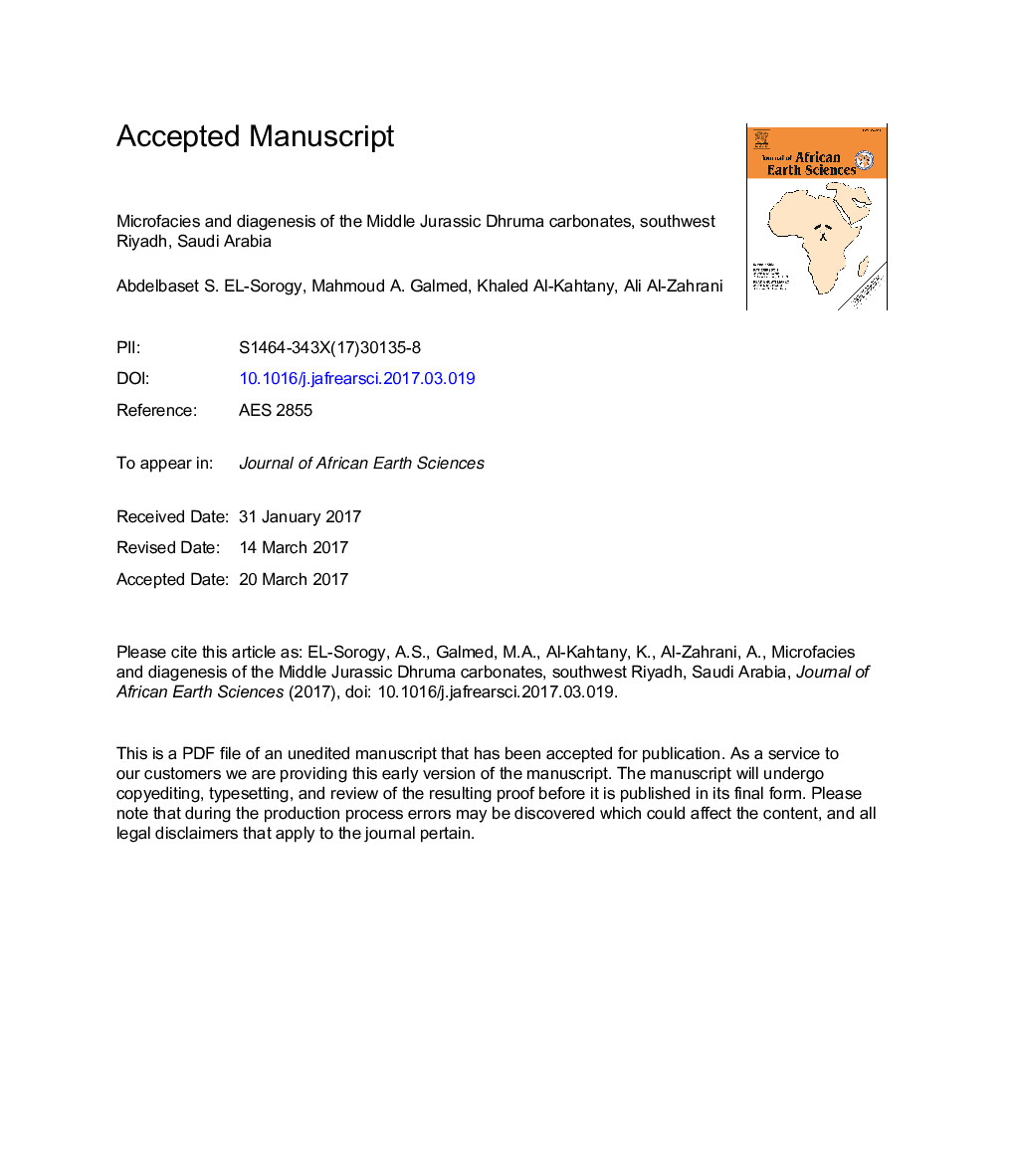| Article ID | Journal | Published Year | Pages | File Type |
|---|---|---|---|---|
| 5785466 | Journal of African Earth Sciences | 2017 | 27 Pages |
Abstract
In order to document the microfacies analysis and diagenetic alterations of the Middle Jurassic Dhruma Formation at southwest Riyadh City of central Saudi Arabia, a stratigraphic section was studied in detail at Khashm adh Dhi'bi area. Mudstones, wackstones, packstones, grainstones and boundstones are the main microfacies types in the studied area. These microfacies types with field investigations and fossil content indicated an environment ranging from deep shelf to organic buildup on platform margins for the studied carbonates. Cementation and recrystallization, dissolution, fragmentation and compaction, silicification, dolomitization, and bioerosion were the main diagenetic alterations affected the carbonate rocks of the Dhruma Formation. Cementation and recrystallization are represented by equant calcite crystals, Dog-tooth fringes of thin isopachous calcites and blocky low Mg-calcites. Gastrochaenolites, Trypanites and Meandropolydora spp. were the most bioeroders in coral heads and large bivalves and hardgrounds. These bioeroders indicated a long post-mortem period during the early diagenetic stage.
Related Topics
Physical Sciences and Engineering
Earth and Planetary Sciences
Geology
Authors
Abdelbaset S. El-Sorogy, Mahmoud A. Galmed, Khaled Al-Kahtany, Ali Al-Zahrani,
